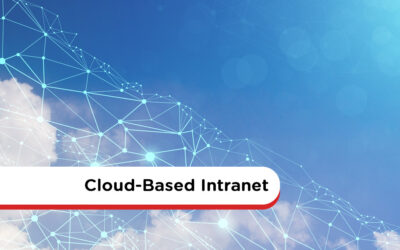Intranet Design Services
Choose from the self-build option with our support or work with one of our designers who will create a customized, fully-functioning intranet for your business, in 40 days or less, guaranteed!
The Challenge: Lack Of Time
You’ve defined your requirements and you know MyHub can deliver the outcomes you’re looking for. But do you lack the time and resources to customize your MyHub intranet site and get it launched on time?
The Solution: We Do It For You
By engaging with one of our designers, we’ll remove all of the complexity and risk by doing it all for you.
Planning For Success
Your MyHub intranet designer will lead the engagement process and ensure you’re updated on progress. The process is broken down into three key stages including:

Scope & Commercials
- Gathering requirements
- Defining launch objectives and timelines
- Developing a site plan including key pages, modules and content
- Agreeing the scope of works, pricing and terms.

Site Design
- Adding a company logo and changing site color options
- Designing and adding pages
- Adding content to pages including images, news articles, text, video and forms
- Adding folders and files to the Document Exchange
- Adding users to the site, Role Groups and Roles

Launch
- Handover and training
- Post-launch support
- Free site audit at any time
MyHub Designers, Delivering Great Outcomes
Intranet Design Articles
Cloud-Based Intranet vs. Company Network: Which is Right for Your Business?
When choosing between a cloud-based intranet and an internally hosted one, it’s important to consider your company’s specific needs, including cost, physical space, and IT resources. Cloud-based intranets require no on-site servers and usually come with lower upfront costs and built-in support, making them ideal for businesses looking for a quick and scalable solution. In contrast, in-house intranets offer more control but demand more maintenance, physical space, and dedicated staff.
Cloud intranets also offer greater accessibility and mobility for remote workers, ensuring employees can log in from anywhere and even during office outages. They often include better document search and organization features compared to typical cloud file storage services like Dropbox or Google Drive, allowing for smoother workflows and more efficient information retrieval.
Security and support are key benefits of cloud intranets as providers handle system protection and troubleshooting. While on-premises intranets give companies full control over deployment and customization, they require internal expertise and greater investment in long-term upkeep. Ultimately, cloud-based intranets offer a more practical solution for many modern businesses needing flexibility and ease of use.
Avoid The Chaos – Introduce Employee Intranet Forum Terms of Use
Clear terms of use are essential for maintaining order and professionalism in internal intranet forums. Without them, discussions can quickly become confusing, disruptive, or even unsafe. This post introduces a downloadable template that organizations can use to establish guidelines for appropriate forum behavior.
The terms cover everything from respectful communication and banned content to moderation rules and how to report issues. Users are expected to avoid things like advertising, personal info sharing, and offensive or illegal content. Moderators have the final say on disputes, and all users must follow their decisions without public challenges.
Having clear forum guidelines not only prevents chaos but also supports digital transformation efforts. It helps create a secure and engaging space for collaboration, reduces misunderstandings, and encourages positive participation across the company.
Collaboration Skills: Does Your Team Have What It Takes?
Effective collaboration hinges on strong communication, shared purpose, and seamless coordination. Modern intranet tools—like MyHub—empower teams with real-time chat, forums, shared calendars, document libraries, and automated workflows, helping remove silos and streamline decision-making. These platforms centralize information, making it easy for teams to access and share updates, feedback, and project files.
Real-time collaboration features—instant messaging, activity walls, and forums—minimize email overload and speed up responses, fostering a more agile, connected work environment. Automated tools give visibility into tasks and deadlines, so everyone stays aligned without constant manual check-ins. Customizable groups and branded project spaces help structure communication around specific goals or teams.
Beyond efficiency, collaboration tools help build trust and engagement. Features like staff profiles, feedback, and ideation spaces support cross-functional bonding and innovation . Mobile access extends these capabilities to remote employees, ensuring inclusivity and consistent culture whether team members are in-office or on the go helping weave strong collaboration skills into everyday operations.
100 Useful Performance Review Example Phrases
Conducting effective performance reviews can feel daunting—especially when finding the right words to describe strengths, growth areas and future goals. This article begins by emphasising that reviews are not just about judgement, but about engagement, development and two-way communication. It highlights that preparation is crucial: balancing positive and honest feedback, setting specific and achievable goals, and avoiding vague statements.
The core of the article is a curated list of 100 example phrases, organised by common review categories: achievements, interpersonal skills, attendance and punctuality, communication skills, collaboration, productivity, time-management/administration, leadership and delegation, problem solving, creativity, vision, potential. For each category it offers both positive and developmental (i.e., areas for improvement) versions, making it simpler for managers to adapt wording for different performance levels.
Finally, the article underscores that the phrases themselves are only a starting point: they must be backed by concrete evidence, examples, and tailored to the individual. It also stresses the importance of a review being a two-way conversation, where employees feel listened to, and that tangible goals and follow-up actions should be set. With that approach, performance reviews can become tools for motivation, not just measurement.
Knowledge Transfer Process In Six Simple Steps
The blog introduces a straightforward six-step knowledge transfer process designed to help organizations capture, share, and retain both explicit and tacit expertise. Given the risk of valuable knowledge walking out the door—especially with retiring baby boomers—the guide emphasizes using structured templates and intranet tools to save time, reduce errors, and improve compliance.
Each step builds on the last: Identify and prioritize critical knowledge, collect and organize it via forms and templates, share through intranet forums and newsfeeds, update regularly with workflows, apply through mentoring and quizzes, and finally, create new knowledge to perpetuate the cycle. Throughout, MyHub tools are showcased—surveys, feedback modules, document hubs, approval workflows—to make each phase seamless and scalable
These practices lead to better continuity (protecting operations when staff depart), efficiency, reduced errors, and a more innovative, collaborative culture. The included knowledge transfer template makes it easy to get started and promote a more resilient, knowledge-rich workplace.
Employee Engagement Action Plan: Time to Drive Real Change
Employee engagement isn’t just a feel-good HR initiative—it’s a vital business driver tied directly to productivity, retention, and profitability. With less than one-third of U.S. workers feeling truly engaged at work, companies need to act now. This blog post provides a detailed roadmap for building and implementing a powerful employee engagement action plan that makes real change happen.
From identifying key engagement drivers like purpose, communication, and development, to gathering employee feedback and setting SMART goals, the post breaks the process down into simple, actionable steps. You’ll find expert tips on onboarding, recognition, wellbeing, and creating collaborative strategies that empower managers and involve your entire team. Plus, there’s a free downloadable action plan template to guide your journey.
Whether you’re starting from scratch or refining your current strategy, this guide is a must-read. It ensures your efforts are targeted, measurable, and sustainable—turning employee engagement from a buzzword into a business asset.







